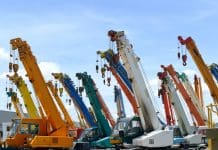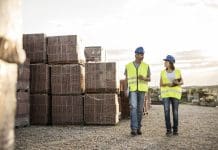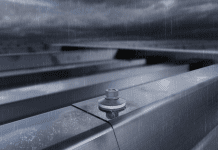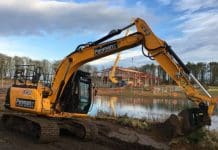The Construction Plant-hire Association (CPA) has released supplementary site operating guidelines for construction plant occupations during the COVID-19 crisis
Following the recent introduction of version 3 of the Construction Leadership Council’s (CLC) Site Operating Procedures on protecting the workforce during the coronavirus pandemic, the Construction Plant-hire Association (CPA) has released a supplementary guidance publication for construction plant occupations.
The publication interprets the core requirements of the CLC-based procedures and outlines a tailored set of additional requirements for a range of construction plant occupations. These include plant operators, supporting personnel such as slinger/signallers, traffic marshalls, maintenance staff and plant delivery drivers.
The CPA publication consists of four pages with a number of topics covered such as preparation, operating, direct support activities, communications and maintenance activities. One section outlines considerations over rescue operations should for example, Tower Crane or MEWP operational emergencies occur. It supports the CLC message in that emergency service response may be limited.
The plant occupations covered include:
- Plant Operator/operatives
- Supporting workers e.g. slinger/signaller, ‘banksman’, traffic marshals; rescue personnel
- Maintenance personnel e.g. mechanics, fitters, inspectors/examiners, installers
- Plant delivery/collection personnel e.g. ‘low-loader’ drivers.
Guidance for construction plant occupations includes:
- Preparing the machine for work – a dedicated operator for each machine, thorough cleaning/sanitising procedure, touch point components cleaned/sanitised
- Operating the Machine – Normal exclusion zone requirements apply, with non-supporting outside of the designated exclusion zone. Workers maintain 2m distance using hand signals or radio communication.
- Direct Support Activities – Gloves will routinely be used to handle equipment and if operation requires a second-person they should avoid travelling in the same vehicle to and from the site.
- Communications – To maintain an effective exclusion zone and personal distancing, hand signals or two-way radio communication should be employed at all times.
- Ceasing of Operations and Shut Down – Cab/platforms should be isolated and secured.
- Maintenance, Installation and Inspection Activities – Visiting maintenance, installation and inspection workers should ensure that their vehicle, tools and equipment are cleaned/sanitised.
- Loader/securer Operations – Cleaning/sanitising procedures should be done on each machine or equipment to be loaded. Gloves should be worn whilst handling the vehicle body or trailer.
- Rescue Operations – Consideration must take into account the availability of a full complement of rescue team personnel and/or equipment, either the emergency services or dedicated response teams, particularly where injury or potential infection to the operator has occurred. Alternative methods of work or other equipment should be considered as a temporary alternative to reduce resultant issues arising from needing to carry out a rescue operation at height.
You can access the full publication here.

















